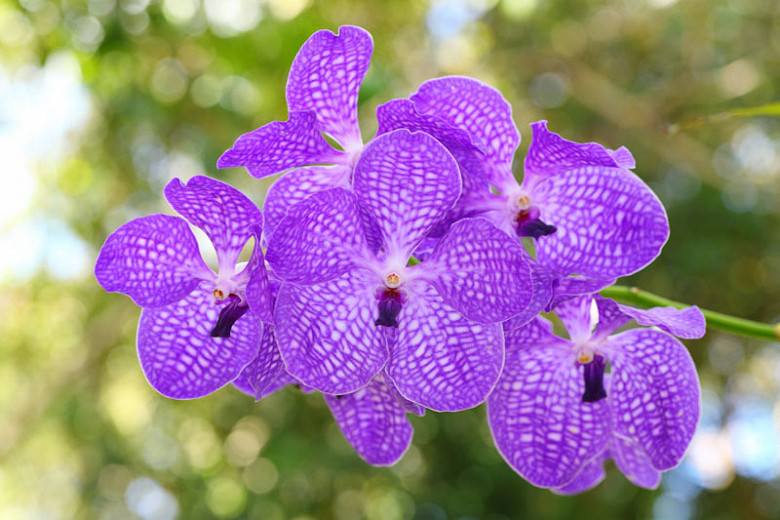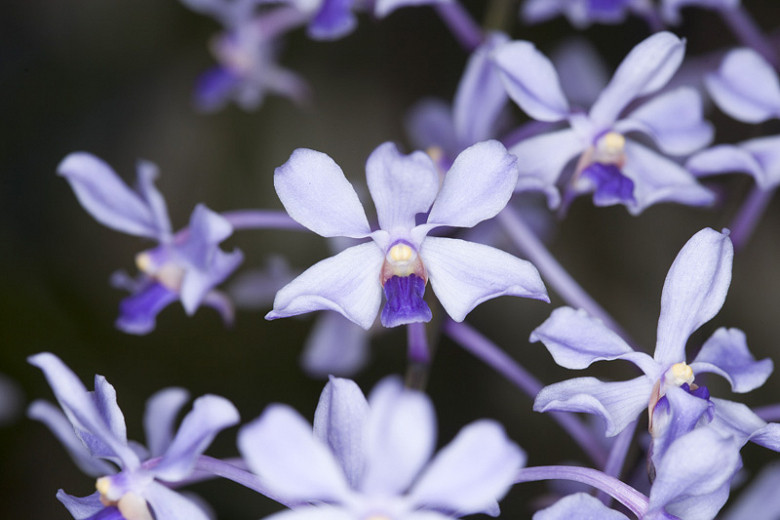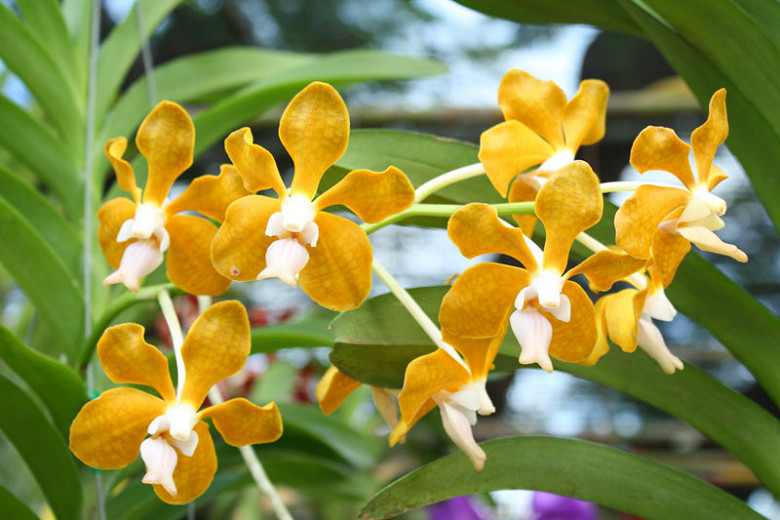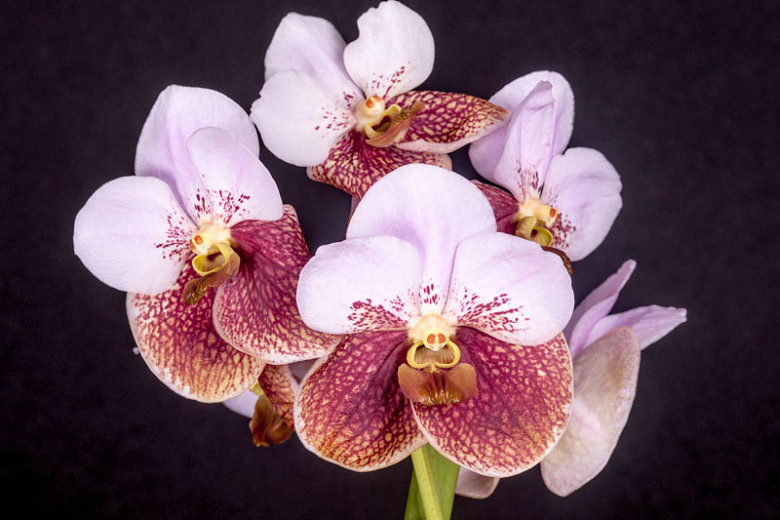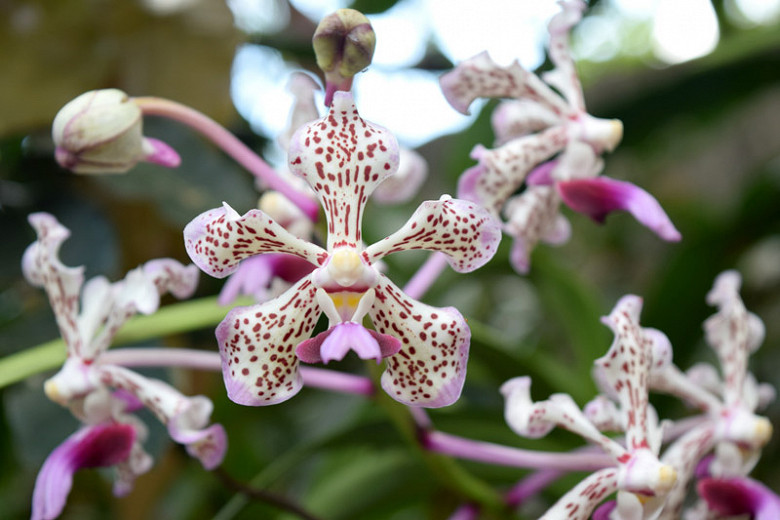Vanda coerulea (Blue Vanda)
Vanda coerulea (Blue Vanda) is a medium to large-sized epiphytic orchid species boasting erect or suberect axillary inflorescences giving rise to large, long-lasting flowers. Blooming in the fall, the blossoms, 4 in. across (10 cm), are pale violet-blue to purple-blue, tessellated with darker purple.
Vanda coerulea (Blue Vanda) is a medium to large-sized epiphytic orchid species boasting erect or suberect axillary inflorescences giving rise to large, long-lasting flowers. Blooming in the fall, the blossoms, 4 in. across (10 cm), are pale violet-blue to purple-blue, tessellated with darker purple. Stout stems carry numerous evergreen leaves, 3-10 in. long (8-25 cm). Native to China and India, Vanda coerulea is a cool to intermediate growing orchid species found on tree trunks in open woodland at elevations of 3300-5300 ft. (1000-1600 m).
- Grows up to 30-60 in. long (75-150 cm) and 20 in. wide (50 cm).
- Grows best when exposed to almost full sun with some partial shade, especially at midday in summer. Provide good ventilation. The leaves should be medium green, not dark green. Dark green leaves indicate not enough light.
- Optimum spring temperatures are 60-62°F (16-17°C) at night, and 80-84°F (27-29°C) during the day.
- Optimum summer temperatures are 64°F (18°C) at night, and 75-77°F (24-25°C) during the day.
- Vanda coerulea orchid needs a necessary cool period of rest in winter. Optimum winter temperatures are 44-46°F (7-8°C) at night, and 71-75°F (22-24°C) during the day.
- Maintain adequate humidity (80-85%) from summer to fall, (50-55%) in winter and spring. Set the plant on a tray of gravel, partially filled with water, so that the pot never sits in the water.
- Water heavily during the active growth period, making sure the roots are constantly moist. Reduce watering in the fall and water sparingly in the winter.
- During active growth, fertilize every week or every two weeks with 1/4-1/2 of the recommended dose of fertilizer for orchids.
- Propagate by division when the plant overflows the pot.
- Once the flowers have faded, remove the spent flower spikes.
- Potting is necessary when the rhizome of the plant protrudes over the edge of the pot or the potting medium starts to break down. This should be done in the spring. Use a coarse medium, whether fir bar, tree fern, or charcoal, and work it around the roots. Keep shaded, humid, but drier at the roots until new root tips grow. Do not overpot.
- Generally disease free. Keep an eye out for aphids, glasshouse red spider mites, and mealybugs.
- Native to Northeast India, Myanmar, Thailand, and southwest China.
Tip for reblooming
- Vanda orchids should bloom at least once a year. If your orchid does not flower, move it to a location where it will receive more light and sun. This may resolve the problem.
Requirements
| Hardiness | 12 – 13 |
|---|---|
| Plant Type | Orchids |
| Plant Family | Vanda – Orchids |
| Exposure | Partial Sun |
| Season of Interest | Fall |
| Height | 2' – 5' (60cm – 150cm) |
| Spread | 1' – 2' (30cm – 60cm) |
| Water Needs | Average |
| Maintenance | Average |
| Soil Drainage | Well-Drained |
| Characteristics | Showy, Evergreen |
| Garden Uses | Patio and Containers |

